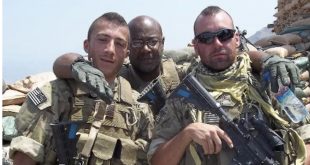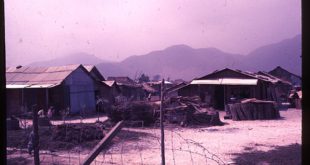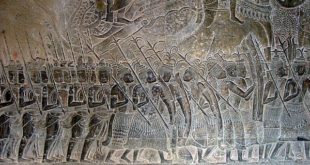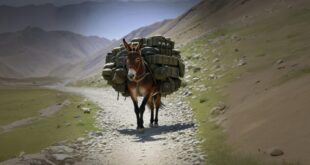By: Daniel Kelly
From the October, 2013 issue of SOF
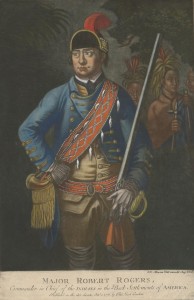 Throughout history, the guerrilla fighter and the war that he wages have been surrounded by a certain measure of fascination, disdain and even romance. From the Special Forces of today back to the legendary Sun Tzu of ancient China, guerrilla warfare has been the great equalizer of armed conflict. Subjected to lighting fast hit-and-run raids, ambushed supply lines, officers picked off by snipers and an enemy that blends in with the civilian populous, larger forces have succumbed to small mobile units of irregulars (often comprised of civilians) time and again. While guerrillas have often been characterized as dishonorable, cowardly and contemptuous, the efficiency effectiveness of such tactics cannot be denied. The history of United States of America is interwoven with guerrilla actions, from the “shot heard around the world” at Lexington, to the lessons hard learned in the sweltering jungles of Southeast Asia, to Special Forces Operational Detachment Alpha (SF-ODA) 555, the 12-man team responsible for creating the Northern Alliance in Afghanistan.
Throughout history, the guerrilla fighter and the war that he wages have been surrounded by a certain measure of fascination, disdain and even romance. From the Special Forces of today back to the legendary Sun Tzu of ancient China, guerrilla warfare has been the great equalizer of armed conflict. Subjected to lighting fast hit-and-run raids, ambushed supply lines, officers picked off by snipers and an enemy that blends in with the civilian populous, larger forces have succumbed to small mobile units of irregulars (often comprised of civilians) time and again. While guerrillas have often been characterized as dishonorable, cowardly and contemptuous, the efficiency effectiveness of such tactics cannot be denied. The history of United States of America is interwoven with guerrilla actions, from the “shot heard around the world” at Lexington, to the lessons hard learned in the sweltering jungles of Southeast Asia, to Special Forces Operational Detachment Alpha (SF-ODA) 555, the 12-man team responsible for creating the Northern Alliance in Afghanistan.
Although the conventional U.S. military typically shies away from such unconventional tactics, guerrilla warfare is alive and well within the special operations community. The godfathers of unconventional American warfare are many, but three particular—and peculiar—units in early American history, along with the men that led them, helped define the face of irregular warfare as we see it today. These are Rogers’ Rangers of the French and Indian War, Francis “The Swamp Fox” Marion’s Militia and Daniel Morgan’s Sharpshooters.
 Rogers’ Rangers
Rogers’ Rangers
The U.S. Army Rangers of today derive both their name and their role on the battlefield from Major Robert Rogers’ Rangers who, in the time that they were active (1755–63) relentlessly harassed and demoralized the enemy during the French and Indian War. The prevailing tactics practiced by the British at the time involved lining up rows of men, 2–3 lines deep, and advancing within 100 meters to unleash a hail of concentrated lead from large caliber smoothbore (read: inaccurate) muskets. Due to the protracted process of reloading and the close proximity of the engagements that often ended in savage bayonet charges, casualties could be astronomically high. The dense foliage and mountainous terrain of New England and Canada were not conducive to this type of warfare and the French and the natives who rallied under their flag gained a foothold in the New World. In 1755 the tensions between England and France escalated and Robert Rogers recruited 50 frontiersmen to the British cause, building the foundation for what would officially become Rogers’ Rangers when England declared war in 1756. The mission of the Rangers was to harass, disrupt and demoralize the French and their allies in their own towns and territories, while simultaneously collecting intelligence and scouting the frontier.
During the ravaging northern winters, as conventional troops holed up in winter camps and garrisons, the Rangers were relentless, ambushing supply convoys and conducting raids on snow shoes and even ice skates, at times hundreds of miles inside enemy territory. When formally inducted into the British military structure in 1758, Rogers’ Rangers refused to wear the uniforms issued to them due to their tendency to snag at the worst times in the unforgiving wilderness. They instead combined frontier, Indian and military articles of clothing for the best camouflage, maneuverability and function according to the mission, season and terrain. The Rangers did whatever it took to accomplish their given mission, once even resorting to cannibalism when starving in the dead of winter, deep behind enemy lines, and being pursued by a numerically superior force. By the time the British won the war in 1763, Rogers’ Rangers had earned the status of legendary guerrilla fighters and scouts and their legacy still lives on today through the U.S. Army’s 75th Ranger Regiment. In fact, inside the current U.S. Army Ranger Handbook, you will still find 19 of Robert Rogers’ Standing Orders to his Rangers, all of which still apply today.
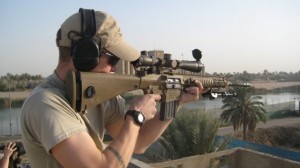 Francis “Swamp Fox” Marion
Francis “Swamp Fox” Marion
Recruiting, training and then leading into battle irregular units comprised mainly of regional inhabitants has long been a staple of guerrilla warfare. The U.S. Army Special Forces, commonly miscalled “Green Berets” (that’s a hat), are tasked with this role on a global scale today, but the beginnings of this highly irregular and difficult approach to warfare in America can be found with Gen. Francis “Swamp Fox” Marion and his roving band of guerrilla militia, “Marion’s Men.” Tasked with fighting off both the highly disciplined British regulars and the local Loyalist militias from 1780–82 in the sub-tropic swamps of South Carolina and north Georgia, Marion (then a captain) set about recruiting and training the local militiamen. Using the knowledge of the terrain to his advantage, Marion set up complex feints that led into ambushes, which led to the repeated defeat of forces much larger than his and his taking of large numbers of captives while often freeing Loyalist prisoners. In one hit-and-run raid, Marion captured 22 British regulars while freeing 150 prisoners of the Maryland Line Infantry, with only 17 local militiamen!
Francis Marion was renowned for his ability to strike with devastating precision and then vanish into the murky, impenetrable swamps from whence he came. He so confounded the British that Lt. Col. Banastre Tarleton, who was recovering from his defeat at Cowpens, was dispatched to find and kill Marion and his supporters by any means possible. Once after spending two days in a swamp for waiting in ambush for Tarleton, who avoided the trap due to Loyalist intelligence, Marion was chased by Tarleton through treacherous swamps, bogs and thick undergrowth. He lost his pursuers after 25 miles, but pushed on another 10 to reach the best defendable position. Exasperated and fed-up with traipsing through the boggy mire after the seemingly ghost-like Marion, Lt. Col. Tarleton is said to have exclaimed, “Come my boys! Let us go back…as for this damned old fox, the devil himself could not catch him.” Thus Francis Marion’s nom de guerre, “Swamp Fox,” was born.
 In the campaign for the locals’ hearts and minds, Marion took a two-pronged approach. He utilized psychological warfare in the form of a terror campaign against the Loyalist militias, their towns, property and homesteads, while using his public image of resourcefulness and cunning to inspire patriotism and support.
In the campaign for the locals’ hearts and minds, Marion took a two-pronged approach. He utilized psychological warfare in the form of a terror campaign against the Loyalist militias, their towns, property and homesteads, while using his public image of resourcefulness and cunning to inspire patriotism and support.
In 1782, after a grueling three-year campaign of lightning guerrilla warfare that prevented the British and their Loyalist colonial allies from gaining a foothold in the southern colonies, the British withdrew from their garrison in Charleston, South Carolina, and eventually signed the Treaty of Paris, ending the war and finally recognizing America as a sovereign nation. The task of recruiting, training and leading the local inhabitants in insurgent warfare against much larger, and often better equipped armies, is no small undertaking. Francis “Swamp Fox” Marion proved more than capable by harnessing the will of the people and mastering the unorthodox tactics and thinking utilized in unconventional warfare. The skills and traits required to conduct this highly specialized warfare are alive and well today and can be found in the U.S. Army Special Forces, who are currently practicing them in conflicts and engagements on five different continents, many of which engagements the public will never hear about.
Daniel Morgan’s Sharpshooters
Such is the ability of the sniper to dominate the battlefield, disrupt enemy activity and morale, and collect accurate intelligence that he is an asset utilized by all branches of the U.S. military today; but the sniper is most valuable to units conducting covert operations and engaging in asymmetric warfare. A single, well-placed shot from a trained rifleman, unseen by his enemy, will at the very least greatly demoralize his opponent and at the very most, can change the outcome of an entire war. The employment of the dreaded lone sniper is one of the most efficient tactics available to the guerrilla fighter. This has been recently demonstrated to devastating effect in such places as Sarajevo, Beirut, Belfast, and Baghdad.
The history of the American sniper can be traced to the men of Daniel Morgan’s Sharpshooters (“sniper” wasn’t a term until 1782 and then not widely used until 1824). Morgan’s Sharpshooters fought the British from Quebec to South Carolina during the American Revolution from, 1776–81. Daniel Morgan single-handedly formed the first ever military sniper unit in the history of armed conflict, comprised of 69 rough Virginian frontiersmen armed with rifles, a technological advancement new to the time and not widely used. Unlike the previously discussed smoothbore musket, the barrels on Morgan’s Pennsylvania long rifles had a series of grooves internally cut in a spiral pattern, called rifling. These grooves put a gyroscopic spin on the bullet, thus increasing its stability, which translated to increased range and accuracy.
 With Daniel Morgan often directing with the use of turkey calls, the Sharpshooters greatly distinguished themselves by picking off British sentries, scouts, artillery crews and officers (a huge violation of the generally accepted rules of war at the time). Daniel Morgan’s unconventional but undeniably effective tactics, coupled with incredible acts of personal bravery exhibited by both himself and his men, directly affected the outcome at several crucial battles in the war. The surrender of Gen. Burgoyne after his defeat at Saratoga took place shortly after Morgan’s Sharpshooters single-handedly eliminated his entire artillery auxiliary, one gun at a time, and then sniped the highly revered Gen. Simon Fraser off his horse, killing him and destroying British morale. The most notable display of General Morgan’s military prowess was his crushing victory over Lt. Col. Tarleton at Cowpens, South Carolina, in 1781, made possible through the use of his Sharpshooters and his grasp of unconventional tactics.
With Daniel Morgan often directing with the use of turkey calls, the Sharpshooters greatly distinguished themselves by picking off British sentries, scouts, artillery crews and officers (a huge violation of the generally accepted rules of war at the time). Daniel Morgan’s unconventional but undeniably effective tactics, coupled with incredible acts of personal bravery exhibited by both himself and his men, directly affected the outcome at several crucial battles in the war. The surrender of Gen. Burgoyne after his defeat at Saratoga took place shortly after Morgan’s Sharpshooters single-handedly eliminated his entire artillery auxiliary, one gun at a time, and then sniped the highly revered Gen. Simon Fraser off his horse, killing him and destroying British morale. The most notable display of General Morgan’s military prowess was his crushing victory over Lt. Col. Tarleton at Cowpens, South Carolina, in 1781, made possible through the use of his Sharpshooters and his grasp of unconventional tactics.
A Rich Lineage
Globalization has brought about a new face to conflict. Warfare has evolved to include thinking outside of conventional means and outsmarting emerging threats at their own game. To survive, America now must out-guerrilla the guerrillas. The military has adapted to this operational shift by employing such units as the U.S. Navy SEALs, the U.S. Marines’ Force Recon and the U.S. Air Force joint tactical air controllers (JTACs), as well the units previously mentioned and several others less well known. The heritage of these units lies in the men and women who fought in guerrilla campaigns as our nation was first setting its roots. Using the terrain to their advantage and employing tactics thought somewhat questionable at the time, units like Rogers’ Rangers, Marion’s Men and Morgan’s Sharpshooters where able to persevere against great odds and succeed in the face of extreme opposition, feats still carried out by the men and women of our military every day.
 Soldier of Fortune Magazine The Journal of Professional Adventurers
Soldier of Fortune Magazine The Journal of Professional Adventurers


